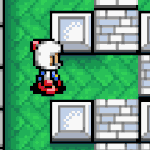|
4x1 raidz1 + 4x2 raidz1 gives you 9TB usable. An 8 disk raidz2 pool of those same disks would give you 6tb, but would be much much less likely to experience data loss.
|
|
|
|

|
| # ? Jun 3, 2024 23:48 |
|
I'm looking for an affordable home NAS solution. I'm a Mac user (currently using both OSX 10.6 and OSX 10.7) and would like a more practical way of sharing my music and organizing Time Machine backups than swapping USB drives around like I'm doing now. I would like a NAS that can house at least two 2TB drives, with one of the drives partitioned into three: one 1TB partition for Time Machine (formatted HFS+), one 50GB partition for when I need to transfer files to a Windows machine (formatted NTFS; I'm using Tuxera NTFS on the Macs so reading/writing to NTFS is slow but working fine), and a third partition comprising the rest of the available space for storing a bunch of other stuff (HFS+). From what I've read, the D-Link DNS-320 is a very cheap and decent device, but it seems to be unable to partition drives and has some issues with Time Machine on MacOSX 10.7 (although these issues seem fixable). Still, I'd prefer to ask some more knowledgable people for their input. What NAS would you recommend to me? The main requirements are affordable and able to use drives that are partitioned in different file systems.
|
|
|
|
Jolan posted:I'm looking for an affordable home NAS solution. I'm a Mac user (currently using both OSX 10.6 and OSX 10.7) and would like a more practical way of sharing my music and organizing Time Machine backups than swapping USB drives around like I'm doing now. I would like a NAS that can house at least two 2TB drives, with one of the drives partitioned into three: one 1TB partition for Time Machine (formatted HFS+), one 50GB partition for when I need to transfer files to a Windows machine (formatted NTFS; I'm using Tuxera NTFS on the Macs so reading/writing to NTFS is slow but working fine), and a third partition comprising the rest of the available space for storing a bunch of other stuff (HFS+). What range is affordable to you? Don't worry about the format for Time Machine, it uses a sparsebundle package to act as a filesystem. My Time Machine lives on a ZFS array and is shared out by Netatalk 2.2.2 on FreeBSD, it doesn't care that the drive is formatted ZFS as the bundle acts as a layer inbetween. In fact, none of the formats matter as your Netatalk/SMB protocol will act as the gobetween. The problem with Time Machine is a lot of the older units have the old version of the AFP protocol that doesnt support new features apple added to Lion. Most of them have caught up and updated their firmware. EDIT: Just looked up the price of that NAS barebones, so 99$ is your budget? Matt Zerella fucked around with this message at 18:07 on Nov 23, 2011 |
|
|
|
LmaoTheKid posted:What range is affordable to you? As cheap as possible, but anything up to about $200 (or €150). If I'm reading you correctly, a drive mounted on a NAS will be accessible from both Windows and MacOSX by default because of the sparsebundle-thing?
|
|
|
|
Jolan posted:As cheap as possible, but anything up to about $200 (or €150). No, time machine will be able to write to your TM share/volume because it creates a sparsebundle, which provides a pseudo HFS+ filesystem. Windows/OSX both support SMB, so they will both be able to write/read to/from the share, and don't care about the filesystem format underneath. If you want to use TM with SMB, you have to create the sparsebundle yourself: http://blog.arogan.com/2010/10/time-machine-over-samba-shares.html (you can set the size of the sparsebundle so it doesn't eat all of your diskspace) I found a thread on the DLINK forums on getting TM running on the 320, but it's 10.6 specific (this uses AFP, not SMB) http://forums.dlink.com/index.php?topic=20999.30 EDIT: to sum up, your clients don't care about the filesystem running underneath your shares, just the share protocol. TM is the exception but it's pretty simple to create the sparsebundle for it to use.
|
|
|
|
Thank you for your reply. I just noticed that the latest DNS-320 firmware update is supposed to have added support for drives up to 3TB, which is another plus. However, quite a few issues seem to remain. Do you have any other suggestions aside from the DNS-320 that would fit my requirements?
|
|
|
|
Jolan posted:Thank you for your reply. I just noticed that the latest DNS-320 firmware update is supposed to have added support for drives up to 3TB, which is another plus. However, quite a few issues seem to remain. You might want to look at the Synology lineup too. They're in the budget and apparently do the Time Machine thing. They also have a ton of cool features. Disclaimer: I don't know anything about modern Macs.
|
|
|
|
Jolan posted:Thank you for your reply. I just noticed that the latest DNS-320 firmware update is supposed to have added support for drives up to 3TB, which is another plus. However, quite a few issues seem to remain. I went the homebuilt route, but as just mentioned, Synology is another option. Maybe start pouring through newegg reviews and review sites and see what works for you?
|
|
|
|
Thanks for the suggestions. But another question: is Wake-on-LAN an interesting feature for home use? Is there a difference on drive wear with or without it?
|
|
|
|
Jolan posted:Thanks for the suggestions. But another question: is Wake-on-LAN an interesting feature for home use? Is there a difference on drive wear with or without it? It's a fun feature; I don't see what effect it would have on drive-wear, the system remains off and only the BIOS/Network controller/few other odds and ends wait in one of the ACPI low power states for a magic packet, and then the boot process starts.
|
|
|
|
-
0x17h fucked around with this message at 12:36 on Jul 18, 2015 |
|
|
|
Have any of you guys had experience with the HP Microserver N40L? I'm considering picking one up, loading it with 2TB or 3TB drives and running a Raidz-1 array on Ubuntu 10.04 Anyone know what performance is like with one of these?
|
|
|
|
There's been a lot of discussion on the Microserver in this thread, I'd say at least in the last 10 pages if not more.
|
|
|
|
-
0x17h fucked around with this message at 12:36 on Jul 18, 2015 |
|
|
|
Jolan posted:Thanks for the suggestions. But another question: is Wake-on-LAN an interesting feature for home use? Is there a difference on drive wear with or without it? I use WOL to wake my Shitology 407e for the weekly rsync from the main storage server at the house. I think it's pretty cool. If I were accessing the 407 more than, oh, once a day or so I would just keep the drives/unit spun up. WOL is useful within a certain range of usage frequency - you don't want to fool with trying to put your main machine on 15 minute standby timeout and then WoLing it every time you want to watch a TV show, for example.
|
|
|
|
Obviously Erratic posted:Have any of you guys had experience with the HP Microserver N40L? The N40L is exactly the same as the N36L (which is what most of us have) apart from the slightly beefier CPU (1.5 vs 1.3Ghz) so any mention in the thread about the microserver is pretty much applicable.
|
|
|
|
0x17h posted:With FreeNAS 0.7 running natively on the hardware, my N36L Microserver managed to saturate gigabit ethernet (80MB/sec writes) using ST31000524AS drives and 1GB RAM, on a software RAID5 array. From what I've heard, the N40L does not offer a significant performance boost but does use a lot more electricity. Thanks for this, I was curious about the N36 vs N40 myself. Good to know that there's not much benefit to going to the N40L. A few questions before I get one. 1. I notice that the N36L has an internal USB port and that many people set their system up on a flash drive. What's the benefit of doing this? Is it mainly to separate out your boot drive from data in case it goes belly-up and to gain an "extra" drive bay? Are there any downfalls to doing this? 2. The setup I'll be using will be a 2TB drive, a 500GB drive, and 2x250GB drives. My main "server" right now runs Ubuntu. Any reason to go with anything else? The original WHS looks kind of interesting from the standpoint that it has Drive Expander which I'd love to use as it sounds awesome, however MS has taken away Drive Expander from the most recent version of WHS. I don't think there's really a way to replicate the drive expander/Drobo-like features beside doing something like ZFS on FreeBSD, but from what I understand that's not exactly the same and kind of a PITA.
|
|
|
|
-
0x17h fucked around with this message at 12:36 on Jul 18, 2015 |
|
|
|
-
0x17h fucked around with this message at 12:37 on Jul 18, 2015 |
|
|
|
0x17h posted:edit: It's an ESXi problem! I ran FreeNAS on bare hardware, imported my zpool, and did some write tests. 50mb/sec right off the bat with no tuning whatsoever, and it started utilizing more RAM. Weird. yeah i did not enjoy the experience of esx + freenas, I wouldn't do it again. I think it's also the reason I ended up with a corrupted raid (since I've got a mix of 4k and 512b sector drives although on different vdevs).
|
|
|
|
Had a scare on Friday. I have an eight 1TB-drive raid-5 array on an adaptec sas controller in my file server. A drive dropped off, so I went to go swap in a cold spare. Didn't pay enough attention to the cabling and yanked the wrong cable with the array live. I was able to recover it and rebuild the array thankfully, but that was a pucker moment there for a bit. That was the scare I needed to set up backups for the main file server. I already have my desktop dumping windows backups to a dns-321 on the rack in the garage, but that's about it. I spent most of the day yesterday scrounging around my spare parts and built a nearly identical server to go in the garage. Once a week, the main server WOLs the backup. Once the backup boots, it runs a robocopy /mir, emails the log file, then shuts down so I don't have another server with 10 drives running all the time. I'll be adding two more drives once I get some more power splitters to handle backing up the DNS-321 as well. Once that's done i'll be able to do complete bare-metal recovery of any system in the house, with backups of the backups. Here's what I used, scripting was pretty straightforward: http://www.matcode.com/wol.htm http://www.ceics.com/support/google-mail-smtp-relay-solution http://cmdtools.codeplex.com/ Edit: Watching the initial sync was fun: 
devmd01 fucked around with this message at 20:00 on Nov 27, 2011 |
|
|
|
devmd01 posted:Once that's done i'll be able to do complete bare-metal recovery of any system in the house, with backups of the backups.
|
|
|
|
The built in Windows 7 backup utility will do backups to network shares, provided you have Pro or above. Same goes for Server 2008R2. Restore is simply booting to a recovery cd and pointing it to the network share location. I also have Crashplan running incremental backup for my desktop and the wife's macbook.
devmd01 fucked around with this message at 22:12 on Nov 27, 2011 |
|
|
|
Why not use Crashplan? It's free for computer-to-computer and then you can easily add their online storage if you want.
|
|
|
|
If anyone's looking for an alternative to Unraid or any of the paid-for drive extender clones, you might want to check out the latest beta builds of Flexraid. It's much better than the previous versions that have been available. Aside from eliminating most of the stupid bugs that plagued earlier releases, there's now a cruise control feature which takes 90% of the hassle out of building an array of disks and the 'real time' mode now works a treat, so you don't have to schedule array updates. Took me all of 2 minutes to configure my array of 4 1Tb drives, then a couple of hours to actually build it. As with previous versions it basically runs a software raid 4, it can survive multiple disk failures whilst preserving at least part of your data in perfectly readable NTFS partitions. I've been a fan for a while but this is the first version I'd happily recommend to other people.
|
|
|
|
I've been trying to read up and this stuff, as well as ask questions on other forums, but I will throw this out here after reading the OP and back a few pages. I currently have the ridiculous situation of my main "office/den" computer having a load of hard drives in it, and a few HTPCs around the house. The main computer always has to be on because if we want to watch something on our HTPC in a different room or access a file, that computer has to be on for us to get the file, obviously. But it's also a gaming/video editing system that I feel like is pissing away electricity being on all the time. I'd like to build a little system, throw a ton of drives in it (like seven 3.5" SATA), put it in my basement somewhere, and not have to leave that Core i7 hog on any longer. I'd like to build mine as I don't need to buy a NAS from Newegg, as I already have a spare "green" power supply, a case that can actually hold 7 hard drives, and even a copy of Windows 7 I never used that I got for dirt cheap from my University. In the OP, it mentions that you can go barebones or use some really beefy specs. Why would something that's just storing hard drives and sending files across a network need beefy specs? What exactly would stop me from getting something like this and throwing that in a case with a bunch of hard drives and a power supply? I apologize for my ignorance in advance!
|
|
|
|
Does anyone have any experience with the Promise SmartStor NS2600? Seems like little money for a good product (I found a retailer offering it for as little as €140), but I can't find any proper reviews.
|
|
|
|
Hamburglar posted:I've been trying to read up and this stuff, as well as ask questions on other forums, but I will throw this out here after reading the OP and back a few pages. Nothing is stopping you. You'll need a controller card though (with 8 drives, you'd want to go SAS/MiniSAS to SATA). Max out the ram, get a smallish SSD or older smallish Hard drive, install your OS, you're good to go after you format/configure the partitions/shares. Personally in a 7 drive array I'd go OpenIndiana/napp-it or FreeNAS (either one with ZFS RAIDZ2). But if you're more comfortable with Windows you should be ok.
|
|
|
|
Ok so I need something called an SAS add-on card? Perusing Newegg the biggest one I see has 4 ports and they're over $100 just for the card. Is this right?
|
|
|
|
Hamburglar posted:Ok so I need something called an SAS add-on card? Perusing Newegg the biggest one I see has 4 ports and they're over $100 just for the card. Is this right? Not sure what an add-on card is but if you scour ebay you can find an IBM m1015 (without the RAID5 key) for 100 or under on ebay. Flash it to IT mode so it passes your drives direct to the OS. Get two of these. And you have support for 8 drives. The only thing you'll want to check is the network card built into that motherboard. Otherwise you should be fine. Also, don't forget, the money you'll save on electricity will take a while to offset the cost of all this.
|
|
|
|
LmaoTheKid posted:Not sure what an add-on card is but if you scour ebay you can find an IBM m1015 (without the RAID5 key) for 100 or under on ebay. Oh wow, had no idea that you could split off like that. That's awesome. Here's where I get pretty dense. IT mode passes my drives direct to the OS? What is this for exactly? The way I'm used to doing this stuff is right clicking a hard drive and sharing it. Anything on the network can then access it. Why does it matter if the card is in IT mode?
|
|
|
|
IT mode will do what you want. The card in IT mode is basically the same as adding 8 more sata ports to the motherboard.
|
|
|
|
Hamburglar posted:Oh wow, had no idea that you could split off like that. That's awesome. Without IT mode, you'd have to build an array on the cards, and that would present the array as one disk to the OS. With IT mode each disk is presented to the OS individually, and then you can make a ZFS array (use ZFS).
|
|
|
|
Hamburglar posted:Oh wow, had no idea that you could split off like that. That's awesome. IT stands for Initiator-Target; it basically turns that card into a dumb HBA (Host Bus Adapter) meaning all it does is give up 8 SATA ports to the OS as raw drives, no other layer in between. You can always find the latest firmware from LSI's site by looking up the OEM version of the card and downloading the sasflash/etc tools for it + latest FW image.
|
|
|
|
Hamburglar posted:Oh wow, had no idea that you could split off like that. That's awesome. It's a bit more involved than that. ZFS is slightly more complicated than just sharing drives. As everyone pointed out above, the IT mode just turns the card into an 8 port SATA HBA. Here's a guide to getting Napp-it up and running. It's pretty simple, install OpenSolaris/OpenIndiana/Nexenta, login as root locally, enter this command: code:And you can set up your arrays/CIFS shares from there (CIFS is SMB aka Windows Sharing) More documentation here:http://www.napp-it.org/manuals/index_en.html It's daunting if you don't know much about *nix but you really only fiddle with it during install of the OS and napp-it, then everything is done via web browser. If you want to give it a shot, try installing it in a VM and add 4 drives so you can build an array.
|
|
|
|
Thanks to everyone who replied. Especially LmaoTheKid, though I can't believe I am going to dabble in a new operating system for the first time in my 14 years of computing (unless I count the TI-99a). I was literally thinking I'd just buy a low powered Windows 7 machine, throw all my hard drives in it, share all the hard drives, and throw it in the basement. I see how utterly wrong I was! Busy weekend ahead for me, so I apologize if I start asking some pretty dumb stuff. Thanks again.
|
|
|
|
Hamburglar posted:Thanks to everyone who replied. Especially LmaoTheKid, though I can't believe I am going to dabble in a new operating system for the first time in my 14 years of computing (unless I count the TI-99a). The whole SAS to 4x SATA thing I learned in here. Everything I know on the subject basically came from here and the spergfest of hardocps ZFS Solaris thread. And like I said, use VirtualBox, download the ISO of the OS of your choice and fool around with it so you can get a feel for the install process and using napp-it. EDIT: if you don't like it, go with Windows. I know I went a bit overboard with the whole USE ZFS OMG DO IT NAO. The m1015 in IT mode should work just fine in Windows 7.
|
|
|
|
LmaoTheKid posted:Go back and read some of the thread. Yeah, thanks again. If it weren't for this thread I'd be feverishly looking for a PCIe card with 8 ports on it or something. Speaking of: LmaoTheKid posted:IBM m1015 (without the RAID5 key) Is this what you are talking about? Meaning is it "without the RAID5 key"? I can't tell from looking at the auction.
|
|
|
|
Hamburglar posted:Yeah, thanks again. If it weren't for this thread I'd be feverishly looking for a PCIe card with 8 ports on it or something. Yep, looks about right. lovely there's no bracket though. The key doesn't matter, all it does is enable RAID5, which you wouldn't be using. But if you find one with the key and it's cheap, go for it. the only reason I said no key is most of the time it raises the price considerably.
|
|
|
|

|
| # ? Jun 3, 2024 23:48 |
|
I can live with no bracket. I'm sure it will be fairly stable in the motherboard...hopefully. Thanks again! Edit: In that thread, it says a downside to flashing to IT mode is this: http://lime-technology.com/forum/index.php?topic=12767.msg124393#msg124393 posted:Cons: Where do you add hdparm -S242 /dev/sdX in a boot script? Or does that only apply if using Linux or something? (meaning I will have hdd spindown in Windows 7?) Chumbawumba4ever97 fucked around with this message at 19:20 on Nov 30, 2011 |
|
|


























